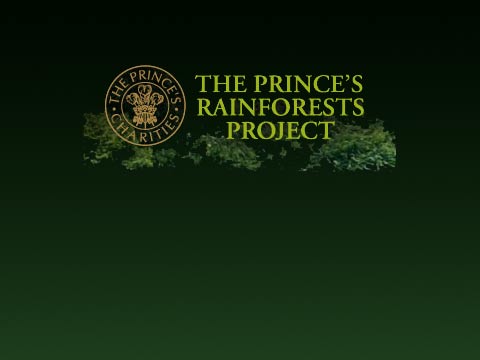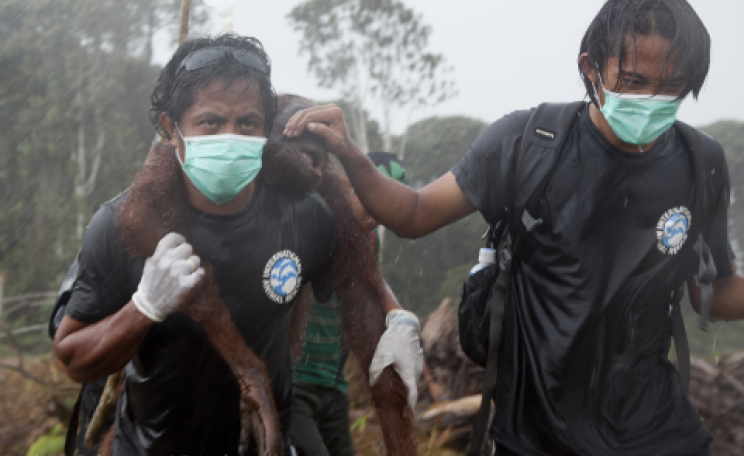Up in the Highlands of Scotland, in the glens west of Inverness, the trees are showing off the richness of their autumnal colours.
Deciduous species brighten up the hillsides; leaves of gold, orange, yellow and fire-engine red. The dense swathes of evergreen sitka spruce and lodgepole pine that clothe sections of the mountains are dull by comparison - yet it is these commercial plantations that have been preferred by landowners since the Second World War, when demand for fast-growing timber soared.
Two thousand years ago it was a different story. This area was covered in a native pinewood wilderness known as the Caledonian Forest: 1.5 million hectares of birch, oak, aspen, juniper and rowan, but primarily of towering Scots pine.
In the Neolithic period it would have been possible to walk from Greenock to Ullapool, and from Skye almost to Aberdeen beneath the broad, spreading branches of these giant conifers.
Tree tragedy
A steady process of deforestation has taken its toll since then, however: wood for fuel; timber for building; clearances for agricultural land; overgrazing by deer and sheep.
Now, a mere one per cent of its former size, the ancient forest is restricted to 17,000 hectares in 35 separate fragments dotted around the country.
It's a human-made tragedy, but there is a human-made solution: Trees for Life (TFL), a charity dedicated to restoring the Caledonian Forest.
Forming part of the Findhorn Bay Community, its three-part strategy involves helping the natural regeneration of remnant populations by fencing them off from deer and allowing seedlings to grow safely, planting native species, and removing non-natives. Conservation volunteers on its work weeks have planted almost a million trees so far.
Boarding the Caledonian Sleeper train from London, I head north to do my bit for forest regeneration.
Trees for Life
Working in conjunction with Forestry Commission Scotland, Scottish Natural Heritage, the RSPB and a number of private landowners, TFL aims to restore native Scottish pinewoods to a target area of 600 sq miles.
Planting began in Glen Cannich in 1989, before broadening out to Glen Affric, Glen Moriston, Achnashellach and Corrimony. Last year it acquired the 10,000 acre Dundreggan Estate, one of the largest areas of UK land bought for forest restoration. The £1.65 million deal will eventually see half a million native trees planted to reconnect Glen Affric with Glen Moriston.
The charity runs 45 work weeks from February to May and from August to November in a number of areas. Work groups generally consist of 10 volunteers and two 'focalisers' - team leaders who 'lead from behind', according to TFL's Craig Dickson.
He has just given me a tour of the beautiful Glen Affric, and we are on our way to Glen Cannich/Cougie. A former volunteer himself, Craig is now in charge of the work weeks. He tells me that I will be planting holly, rowan, juniper, willow and birch - the Scots pine is planted in June - all vital parts of the complex ecosystem that will eventually make up the rejuvenated Caledonian Forest.
Depending on the time of year and where your work week takes place, there are a number of other jobs that need doing - restoring a forest is about more than simply planting.
New fences need to be put up to keep deer away from sapling trees; old fences need to be taken down or adapted to make them more visible to species such as the endangered capercaillie, a large, low-flying grouse; seeds need to be found and germinated; invasive species need to be removed.
Plans and pioneers
The mist clears slightly in the afternoon, revealing in slow, swirling increments the sloping hillside, the road where the Trees for Life van is parked, distant mountains, and on the other side of a wide valley, the greens and brown of a partially felled commercial forestry plantation.
Forestry Commission Scotland has committed to planting only native trees here in the future, and vast regimented swathes of pine trees have been 'felled to waste' - chopped down and left to rot, restoring nutrients to the ground before replanting.
Armed with a narrow spade, a pair of work gloves, wellington boots and waterproofs, this is my second day on the mountain. It's hard work but great fun, and as far as jobs go much preferable to sitting in front of a computer. Focaliser Phil Golder was a self-confessed 'IT geek' until he discovered the TFL project in 2006, and has been volunteering ever since.
'I get such a buzz out of seeing people come along and have the same transformative experience,' he says. 'There's also something fantastic about this work, about massaging this ancient landscape back to life.'
The team are spread out across the hillside, a mix of ages and a mix of backgrounds, including a paramedic, a teacher, an editor and a heating engineer. We are systematically scouring our hillside for homes for the plants in the heavy-duty canvas bags slung over our shoulders.
The holly is the problem: it prefers well-drained, sandy soil, and given the boggy nature of the ground and the fact that it's raining, it isn't having much luck.
The peat-like earth makes damp sucking noises as the spade goes in, an early indication that this may be the spot for some rowan instead. These fast-growing trees are a 'pioneer species', which not only tolerate wet conditions but also help to dry out the ground, improving conditions for the trees that will follow.
The haphazard vanguard
The particular area we're covering has been planted before, but putting in as many trees as possible increases the chances of success. This is to be the last planting week before the 30,000 new additions that have been dug into the soil over the past three years will be left to grow.
Tiny Scots pine, willow and juniper in various stages of growth are already springing up in every conceivable spot. It may seem haphazard, but deliberately so.
The trees we're planting have been grown from seeds taken from the nearest surviving plants to ensure they have the same local genetic makeup.
The random, non-linear planting within fenced exclosures is intended to mimic seed dispersal by the wind. Everything here is part of a long-term plan. And once the trees planted here have established themselves, their seeds will be blown westward to repopulate other areas in a more natural way.
Ours are basically the vanguard: exposed to the elements, they will provide valuable shelter for the ones that grow behind, which will be stronger, the habitats that support them richer and more varied.
Future flourishing forest
Our day's work lasts from 9am until the light begins to fail around 5pm - and after that there is cooking to be done: volunteers take it in turns, two in charge of preparing the meal, two in charge of washing up.
The atmosphere at Plodda Lodge is so friendly it feels as though the team has known each other for years, not days.
And after trooping up and down the mountain, traversing difficult terrain, bending and digging, my sleeping bag in the dormitory bunks feels like a goose-down duvet.
In the decades to come, the trees we've planted will flourish, reconnecting and revivifying remnants of old-growth Caledonian Forest, transforming the barren glens, and regenerating and repopulating surrounding areas.
An entire ecosystem, complex and interdependent, will be reborn, made possible by an army of conservation volunteers armed with spades and the desire to make a difference.
More information
Trees for Life work weeks cost £63 for unwaged members, £70 for unwaged non-members, £117 for members and £130 for non-members - £10 of which goes towards annual membership. The cost to TFL is more like £300 per person, so volunteers can choose to donate more if they like. Call 01309 691444 (local) or 0845 6027386 (national) or email rosie@treesforlife.org.uk
To arrange transport on the Caledonian Sleeper, contact Scotrail (08457 55 00 33), and for more information on Scotland try VisitScotland.
| READ MORE... | |
 |
INVESTIGATION Can we trust the FSC? It's the logo we all look for when buying furniture and wood products. But the Forest Stewardship Council has come in for some serious criticism. Matilda Lee looks at both sides of the argument |
 |
GREEN LIVING Secret getaway: Skomer Island Want to mix a little conservation with your holiday? Volunteering on Skomer Island, a haven for seabirds and nature lovers, is a rewarding experience says Eifion Rees |
 |
TAKE ACTION The Prince's Rainforests Project: keeping forests standing It's the best hope for creating a critical mass of support for tough action on tropical deforestation, and its website offers a wealth of information for all |
 |
GREEN LIVING How to live differently Stressed out and living for the weekend? Breaking free may be easier than you thought... |







